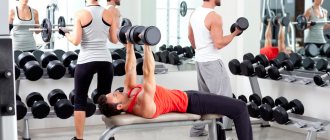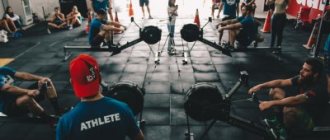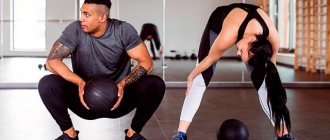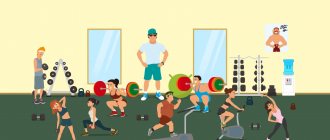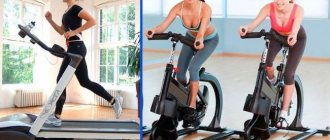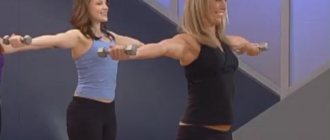The main differences between yoga and fitness
Yoga is a special spiritual practice. It includes eight steps that affect all areas of human life - work with the breath and body, control of mental processes, mind, consciousness. The system has many varieties, but the most popular directions are kundalini, power, bakrim, Iyengar, Ashtanga yoga.
Classes last about one and a half to two hours. They consist of various asanas - exercises for fixing the body in a certain static position with an elongated spine for 30-60 seconds. They work on ligaments, muscles, and the vascular system. For training, you need special mats, bolsters, belts, blankets, weights, as well as additional equipment, depending on your level of training. The practice is aimed at enlightening the moral spirit, uniting bodily forces with moral ones, acquiring spiritual and moral beauty and physical health.
Yoga came to us from India and has been practiced for more than 5,000 years. It is defined as a set of physical and spiritual practices that control the psyche and help achieve a special state of body and spirit. Yoga is based on proper breathing and meditation. Exercises do not provoke overheating of the body; all parts of the body are involved in the work at the same time.
Fitness is a set of physical exercises to maintain health and maintain body tone. It is based not only on regular training. Essentially, this is a philosophy of existence, an optimistic lifestyle with the abandonment of bad habits, a strict rest regime and proper nutrition. The main goal is not to achieve high athletic performance, but to create a full, healthy life.
Fitness differs from yoga in that it is divided into several areas, each of them has its own specifics and degree of complexity. This:
- Aerobics is a complex for the development of the muscular system, flexibility, and proper breathing. It is classified into classical, dance, step, slide, tracking, kick, pump and bicycle aerobics. Excellent for strengthening muscles, breathing, and stimulating the competitive spirit.
- Water aerobics . It is carried out in water accompanied by music using an inflatable belt. It is practically atraumatic and is indicated even for people who have problems with the spine and joints. Works all the muscles of the body well, promotes weight loss, serves to prevent and combat cellulite and varicose veins. No swimming ability required.
- Pilates . Develops flexibility, endurance, and individual muscle groups. Used as therapy for post-traumatic recovery. Suitable for pregnant women and people with an unhealthy spine.
- Stretching . For stretching ligaments and individual muscle groups, relieving tension and burning subcutaneous fat.
- Callanetics
. Based on breathing exercises from yoga and alternating static loads with stretching. - Scandinavian (Nordic) walking
. Performed with the help of special sticks, it trains the heart and blood vessels, and helps to recover from injuries. - CrossFit
. Alternates between intense light and weightlifting training, gymnastics, and powerlifting. - Fitbox
. A combination of Thai boxing and aerobics to burn fat, tighten your figure, increase endurance and reaction speed. - Fitball
. This is stretching and strengthening of muscles using a large exercise ball. - Bodyflex
. A set of physical exercises with special breathing exercises. Used for weight loss, enhancing metabolism, muscle elasticity. The only fitness direction that helps rejuvenate the face and décolleté.
Unlike yoga, fitness involves a combination of a proper diet with strength and cardio training. It is most often used for weight maintenance and weight loss.
Fitness must be distinguished from shaping, which is based on both training and a specialized diet for systematic weight loss.
Strange mix
Fitness yoga is one of the synthetic areas of fitness that combines seemingly two incompatible things - calm exercises accompanied by music and serious physical activity. This cannot be said to be perfect. New proprietary programs are constantly being developed, but they have not yet reached the level that gives quick and tangible results for those who want to lose weight. Reviews about it are different. Those for whom traditional yoga is too calm, but who cannot yet afford the fast pace of classical fitness, like the new direction.
Classes are held at a moderate pace and focus on those asanas (postures) that allow maximum load and work on problem areas. At the same time, all the usual attributes of yoga are present: beautiful light, scented sticks, stylized music.
An example of such a workout can be seen by downloading a video on the Internet. But don’t forget that all trainers are different and each of them has their own idea of what fitness yoga is.
What are the benefits of yoga and fitness?
During yoga, all muscle groups are actively worked out, the body becomes more relaxed and pliable. A person gains a positive attitude and is charged with new strength.
- pain in the back and cervical region decreases;
- weight stabilizes;
- metabolic processes are activated;
- the psychological state is normalized;
- immunity is strengthened;
- sleep improves significantly;
- increased concentration and productivity;
- relieves anxiety and depression;
- endurance and stress resistance increases.
When choosing a yoga mat, be guided by height - add about 20-25 cm to this indicator so that your feet or head do not end up on a hard floor without insurance.
Fitness heals the body, energizes it, normalizes metabolism, activates digestion, and also:
- strengthens both all muscles and their individual groups;
- develops coordination of movements;
- forms correct posture;
- increases body flexibility;
- supports stable functioning of the cardiovascular system;
- reduces stress and nervous tension;
- helps in the prevention of thrombosis and osteoporosis;
Just seven minutes of active fitness, and your blood sugar levels return to normal.
A set of fitness yoga exercises for beginners
The entire workout consists of three stages: warm-up, main part and end.
The purpose of the warm-up is to warm up the muscles and ligaments, prepare them for stretching, and help the cardiovascular system get into a working rhythm. A set of exercises for beginners may include:
- slow running;
- bends;
- squats, maybe shallow;
- jumping rope;
- lunges;
- race walking;
Warm-up should last from 15 to 20% of the entire session.
The main part consists mainly of asanas and exercises with a fitball. Different studios practice their own complex. Let's get acquainted with the main positions:
- Warrior pose. Standing position, legs close together, arms along the body. A long lunge is made with the right leg. The arms are thrown out parallel, then raised and joined above the head. In this position, pause for a few seconds. Next, the muscles of the extended leg are stretched. Returns to the starting position. You need to do the same with the other leg.
- Chair. The position is "at attention". Legs are brought together. Slowly bend your knees, then squat, simulating sitting on a chair. We stretch our arms up. Keep your lower back straight. We fix this position for 3-5 seconds. We sway on half-bent legs. We return to the starting position. We do this several times.
- Boat. Lying position, arms along the body. Raise your legs and upper body together to an achievable angle. We hold our hands in front of us. We remain in this position for a comfortable time. We slowly return to the starting position.
- Dog pose. From a standing position, we slowly bend over and place our palms on the mat. We step back a little with our feet and raise our pelvis. A triangle is formed. The head is below the elbows. It is necessary that the weight is evenly distributed between the upper and lower parts of the body - then you will feel comfortable in the pose. This relieves tension from the shoulders and back, but also loads the legs, which will become slimmer.
- Shavasana. This position ends the training. It helps to completely relax, relieve tension in individual muscles that have become stiff. Lie with your back on the mat, spread your arms helplessly, and spread your legs to a comfortable distance. Close your eyes, feel the sweet languor. Sharply activate all muscles, then relax.
Contraindications
The workouts are suitable for people of different ages, genders, and levels of physical fitness, but there are also contraindications.
Yoga is not recommended for:
- mental disorders and epilepsy;
- diseases of the heart, hematopoiesis;
- presence of tumors;
- glaucoma;
- spinal injuries, craniocerebral problems;
- infectious diseases;
- problems with the musculoskeletal system.
Temporarily you should not take asanas in case of exacerbation of chronic diseases, serious fatigue, temperature rise above 37 ° C, or instability of intracranial pressure. You should also abstain immediately after operations, weightlifting training, visiting a sauna, and during menstruation.
Yoga for pregnant women is generally not contraindicated, but you need to do it according to specially developed lightweight programs.
If you suffer from vegetative-vascular dystonia, then limit yourself to vertical asanas; for neuroses, relaxation poses are recommended, and for digestive problems, twisting is recommended.
Fitness is not recommended for oncology, chronic and acute infections, and mental disorders. In addition, they should not be practiced if:
- arrhythmias, angina pectoris;
- curvature of the spine;
- problems with leg joints.
Water aerobics should not be practiced by women with dermatitis, during menstruation, or with chronic gynecological problems.
The list of restrictions varies in each individual case, because there are standard and lightweight programs. Be sure to consult with your doctor and trainer before starting.
Don't "chase" other gym goers. Their sporting achievements are a reason for their own development, but not sudden leaps in an attempt to “catch up and overtake.” It is better to increase the load and complicate the course gradually than to then intensively treat a jammed neck, an injured knee joint or a torn back.
Is it possible to do yoga or fitness on your own?
Both yoga and fitness are equally suitable for self-practice at home or in the gym. But practice shows that it is optimal to do this in a fitness club with a trainer, because control:
- significantly disciplines and does not allow you to relax;
- allows you to correct and avoid mistakes when performing movements incorrectly;
- significantly increases the effectiveness of training.
The difference between training at home and under the supervision of a specialist is colossal.
Important! You shouldn't set sports records on an empty stomach. It is better to enjoy a light salad, natural yogurt, kefir, a piece of boiled chicken, fish or oatmeal within one and a half to two hours. Immediately after class, drink water, and after half an hour you can already have a protein meal with fiber.
What is easier for a beginner to master?
It often happens that people enthusiastically take up sports and give up the activity with the same success. To ensure that your interest does not fade, and that training is easy and beneficial, choose fitness at the initial stage. It stimulates activity and provokes excitement.
As your body strengthens, you can switch to yoga. For calm sessions, choose Kundalini, Hatha or Iyengar. If you are used to a fast pace and are in good physical shape, then power or Ashtanga is suitable.
What is better - fitness or yoga?
It all depends on your preferences. If you like activity, moving quickly, and strength training, then fitness is best for you. If you prefer a calm pace, leisurely movement, and soft music, then it is better to choose yoga. Nowadays, many fitness clubs offer introductory classes, so you can visit both areas and choose what you like best.
Is it possible to combine yoga and fitness?
But you don’t have to choose. There is a fitness yoga system. This is a simplified option for strengthening a healthy mind and physically resilient body. Based on a combination of traditional yogic poses and breathing exercises. The mix also includes classical choreography exercises and stretching elements.
Fitness yoga develops flexibility, endurance, increases vitality, and helps stabilize weight through proper breathing. Ideal for athletes, traditional fitness enthusiasts, and professional dancers. It has no restrictions on age or physical skills, and is optimal for those who have difficulty withstanding stress.
Important
! It takes at least 24 hours for muscles to recover after serious physical activity, so it makes no sense to pump them up every day. Do this every other day. Cardio exercises can be done daily.
